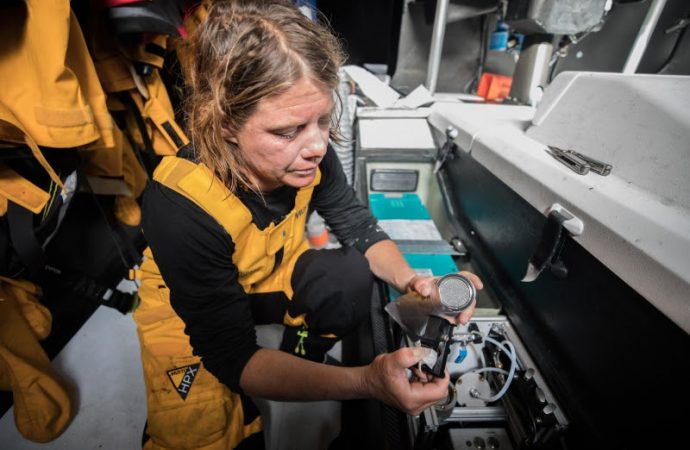Only two samples out of 68 had no traces of microplastics, while some had as many as 300-plus particles per cubic metre
The shocking level of plastic that resides in the ocean has been laid bare by a study carried out by Volvo Ocean Race, which found microplastic in almost every water sample it collected.
As many as 349 particles of microplastics per cubic metre were found in a sample collected in the South China Sea, while 307 particles per cubic metre were collected where the Mediterranean Sea meets the Atlantic Ocean.
Indeed, of the 68 samples collected over the course of the race – from departing Alicante in October 2017, to its complete global circumnavigation to Cardiff in May 2018 – only two samples contained no microplastics, a sample collected off the south coast of Australia and one from the east coast of Argentina.
The most recent sample taken, off the US coast of Newport, Rhode Island, 75 particles of microplastics were found per cubic metre.
Even a sample collected close to the waters of uninhabited Antarctica found microplastics were as high as 25 particles per cubic metre.

Microplastic samples have been analysed by members of the Volvo Ocean Race’s scientific consortium in Germany. Those findings will now be presented at the Volvo Ocean Race Summit in The Hague, Netherlands, by Dr Toste Tanhua, of GEOMAR Institute for Ocean Research, today.
“Thanks to the great cooperation of the Volvo Ocean Race and the teams on the water, we have been able to collect a very valuable and unique data set during the race which we have been able to share with the wider scientific community,” said Dr Tanhua.
He added: “Unfortunately, almost all the samples contained microplastics, meaning that the plastics are carried with ocean currents to the most remote parts of the world’s oceans.”
More than eight million tonnes of plastic is dumped into the ocean every year. Microplastics are often invisible to the naked eye, taking thousands of years to degrade and contaminating marine life.
Anne-Cecile Turner, sustainability programme leader for Volvo Ocean Race, said the findings revealed how “pervasive” microplastics have become.
“The collation of a complete data set by this elite scientific consortium is of exceptional value and provides an historic legacy and clear benchmark for our future understanding of the world’s oceans and climate,” she added.










Leave a Comment
Your email address will not be published. Required fields are marked with *